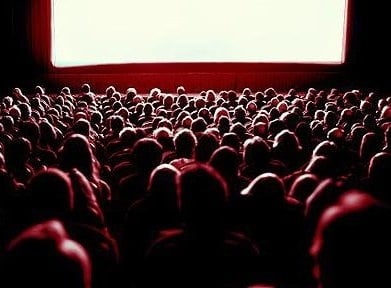Watching a Movie with a Purpose
by Ron Estrada
This week kicks off the big movie season for Hollywood. Thanksgiving weekend will launch some of the biggest flicks of the year. In fact, Catching Fire, part two of the Hunger Games trilogy, has already opened. It’s on my “to see” list this week.
As a writer, though, you shouldn’t just sit and watch these movies. You don’t get to do that. Once you dive into the world of the fiction novelist, reading books and watching movings are homework, not just entertainment. Hopefully they’re both, but I want you to grow as a writer with every book you read and every movie you watch.
So, when you sit down to watch Katniss fire her flaming (or not) arrows at an endless stream of attackers in dystopian America this weekend, or watch a young girl learning to read in Nazi Germany, or a 40something loser who’s just discovered he’s the father of 533 grown children, I want you to take notes. Maybe just take them in your head or, if your date doesn’t mind, take a little notebook along. If your date does mind, it probably isn’t a good match anyway.
Movie Notes!
Simple things to look for in a movie that will coincide with your novel writing.
1. Introductory scene, or setup. In the opening scene, do you know who the protagonist is? Is the setting clear? What is the tone of the story? Is there tension right away?
2. Pet the Dog or Save the Cat. This is the moment where the protagonist shows her human side. She does something, likely unrelated to plot, that makes you feel empathy with her. It’s especially critical if the protag is a tough, no-nonsense cop or soldier type. Many films leave it out, and it’s a few seconds that might have saved it.
3. Inciting incident. Something should happen right away that grabs your attention. It may or may not be related to the ultimate plot.
4. Point of no return, or plot point 1. This should occur about 25% into the film. The protag must accept the quest or challenge. Did you spot it easily?
5. Mid-point, or man in the mirror. This is where the protag takes a long hard look at himself and the decisions he’s made. It’s where he turns from wrong behavior to right behavior (unless it’s a French film, then he just gets worse).
6. Plot point two. At the 75% mark, a major event takes place that launches the protag into the final scenes. It’s usually some sort of disaster, like the death of a friend or ally.
7. Dark moment of the soul. You know this one. It’s where all is lost. The protag has hit bottom and has nowhere to go.
8. Final confllict. The protag faces the antogonist, usually face to face, in the final battle, where she must use all of her skill and resources to defeat the enemy. Keep in mind, the enemy in a comedy or drama may be subtle, perhaps an institution or public opinion. Watch close.
Don’t forget symbolism
Those are the biggies. I also like to look for the use of symbolism. Little things like carefully placed stop lights or clocks add depth. We miss them because we normally don’t watch for them. You, as a writer, will watch for them. Understand your homework? Okay, I think next week we’ll discuss Catching Fire, since that is the most popular film out at the moment. I also saw Delivery Man this weekend, so we can bring that up as well.
By the way, listen to the crowd around you. What moments got the big reactions? If the movie is a dud, what might have improved the film?
Okay? Grab your date and notepad and get to work!
